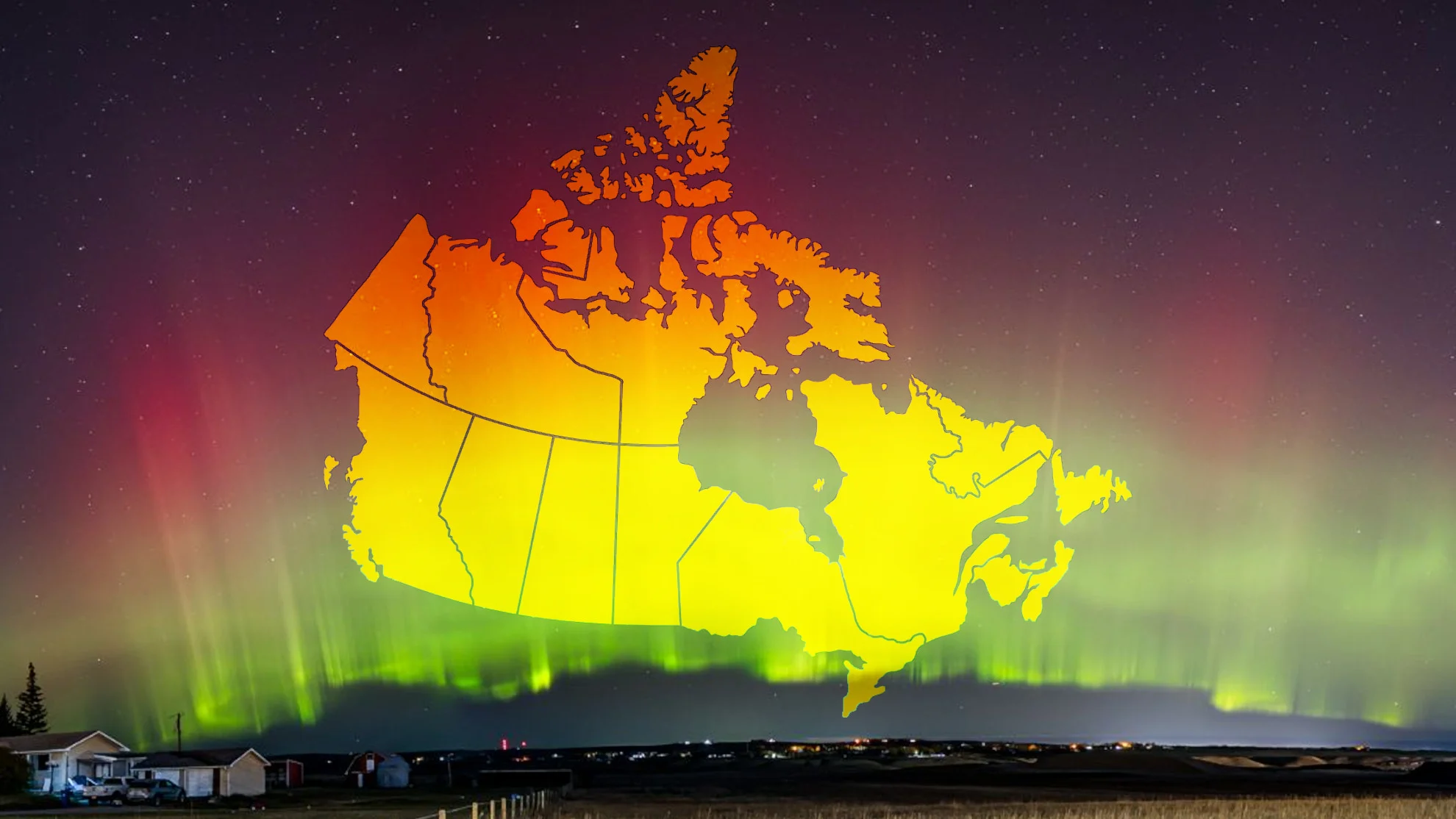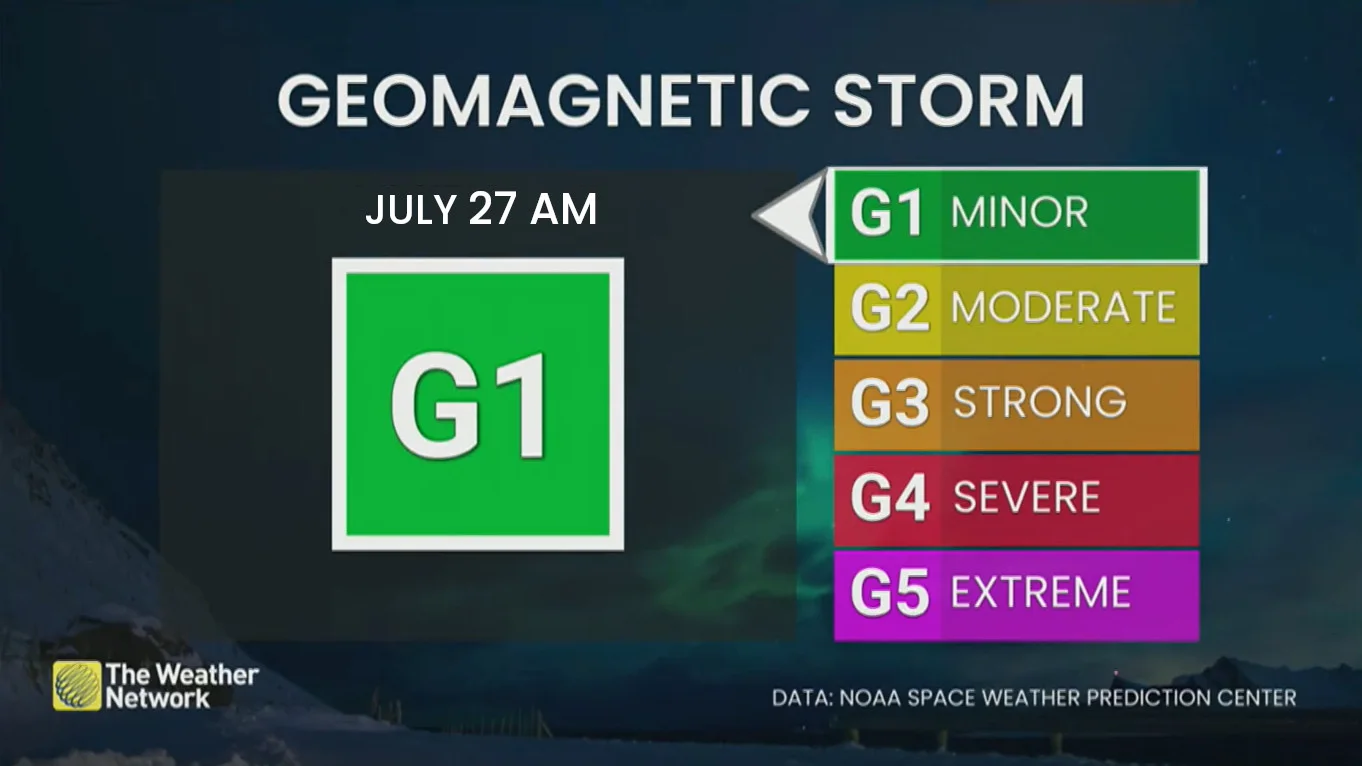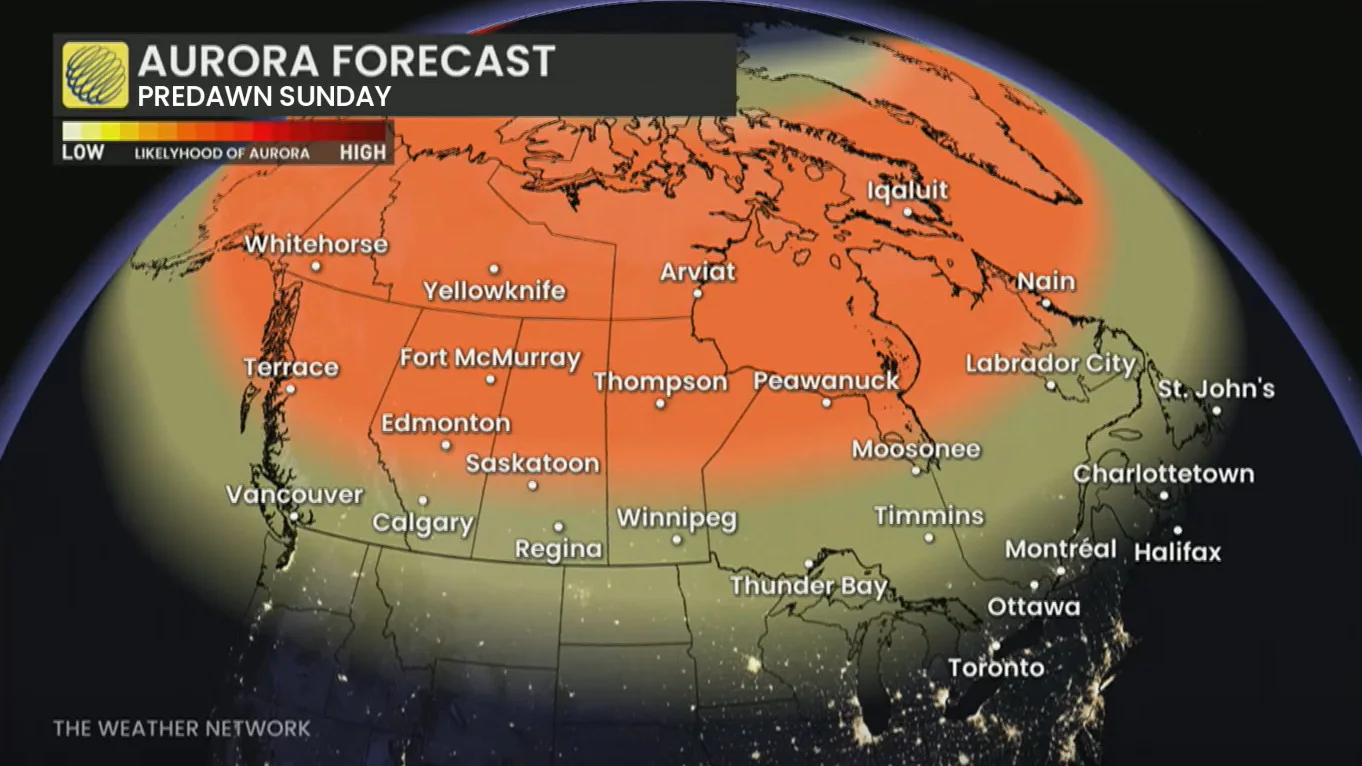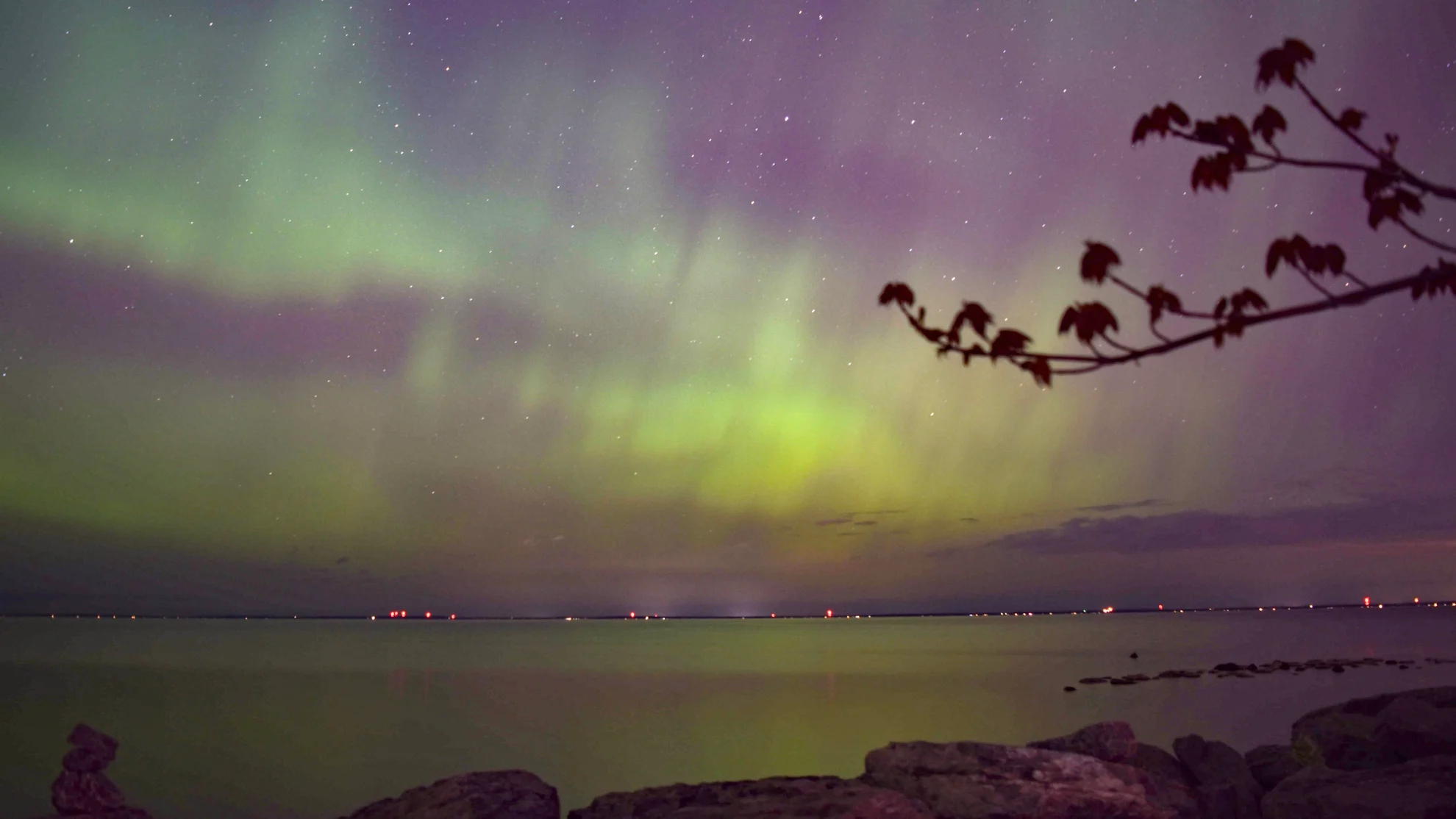
Aurora Borealis may shine over parts of Canada this weekend
A passing solar storm could light up the predawn sky on Sunday.
Eyes to the north early Sunday morning, for a chance to see the Aurora Borealis shining in the sky.
A cloud of hot, magnetized plasma — a coronal mass ejection — erupted from the Sun on Wednesday, July 23, headed off into interplanetary space. On the morning of Sunday, July 27, the very edge of this cloud is expected to scrape across Earth's geomagnetic field, potentially sparking a minor geomagnetic storm.
This could result in a burst of auroras stretching down across Northern Ontario and central regions of Manitoba, Saskatchewan, and Alberta.
Forecasters with NOAA's Space Weather Prediction Center are watching for this G1 geomagnetic storm to occur from 09 through 12 UTC on Sunday. That's between 5-8 a.m. EDT, 4-7 a.m. CDT, or 3-6 a.m. CST/MDT.

READ MORE: Geomagnetic storms: When should we look up and when should we worry?
Based on that timing, this event will likely be best seen just before morning twilight around Lake Huron and Georgian Bay, and though Northwestern Ontario. From the shores of the Bruce Peninsula and the eastern side of Georgian Bay, the auroras will likely be visible just along the northern horizon. Farther north and throughout Northwestern Ontario, they could appear overhead.
Early risers across the Prairie provinces with a clear, dark sky could spot the Northern Lights for a few hours before dawn. Due to the angle of the aurora 'oval', they are far more likely to appear overhead, or nearly so, from locations across central Manitoba, Saskatchewan, and Alberta.

DON'T MISS: How to get the most out of auroras, meteor showers, and other night sky events
Seeing the auroras during summertime is a bit of a rarity. They are far more common during the other seasons of the year.
This is partly due to the longer nights. However, displays become more frequent and vibrant in the spring and fall. That's when Earth's geomagnetic field tends to be more susceptible to the magnetic impacts of the solar wind and coronal mass ejections (aka 'solar storms').

This vibrant, colourful display of the Northern Lights was captured from Collingwood, ON, on May 10, 2024, during one of the strongest geomagnetic storms in decades. (UGC/Angie Gibson)
Over the past year we have seen more of these intense bursts of aurora activity, some of which have even occurred in what is traditionally considered the "off" season for the Northern Lights.
This is due to the Sun currently experiencing a period known as 'solar maximum'. This is when all of the typical solar activity — sunspots, solar flares, coronal mass ejections, and fast solar wind streams — are ramped up to their highest levels of the past 11 years.
According to solar scientists we reached solar maximum in late 2024, and it will likely continue throughout 2025 and into early 2026.
